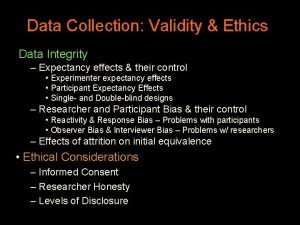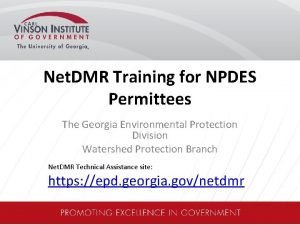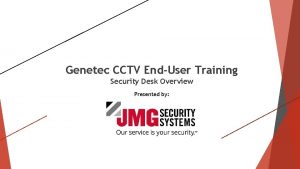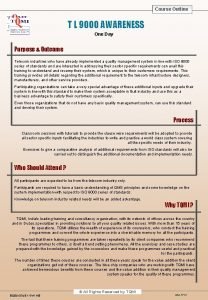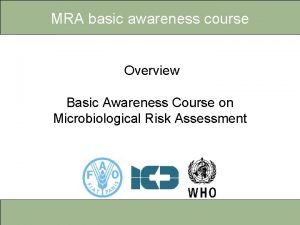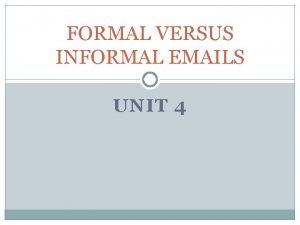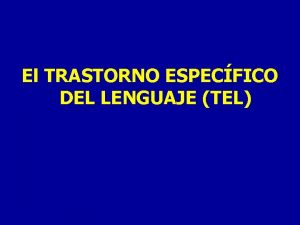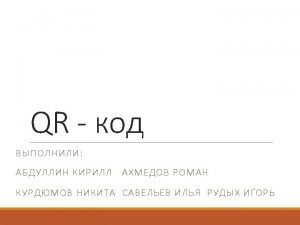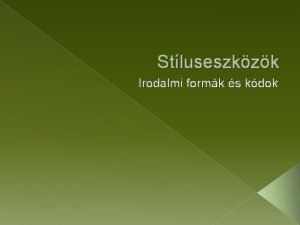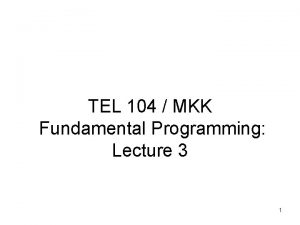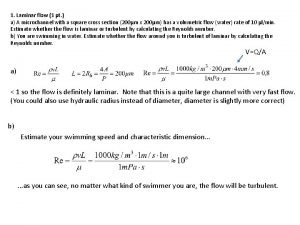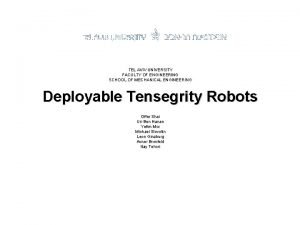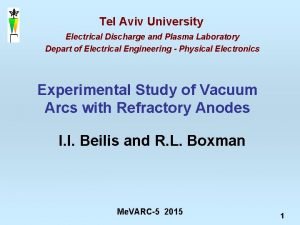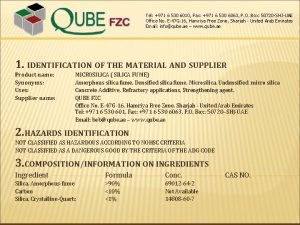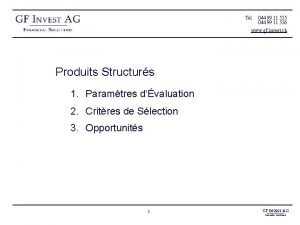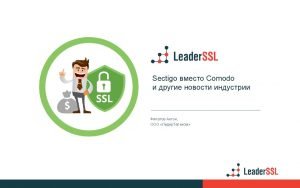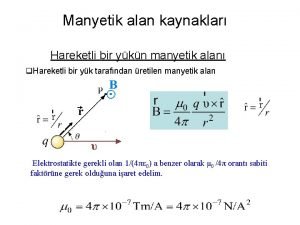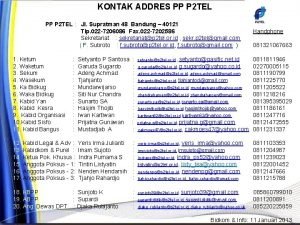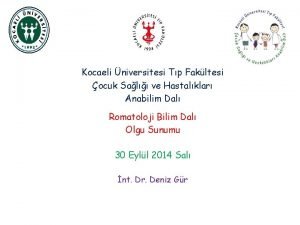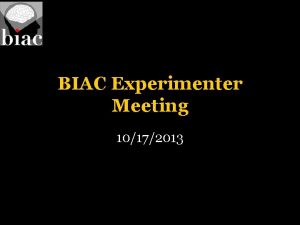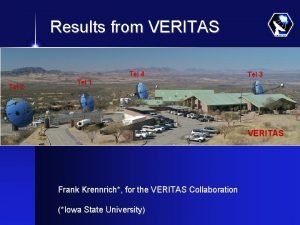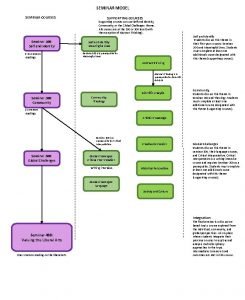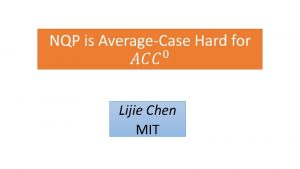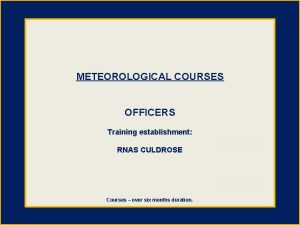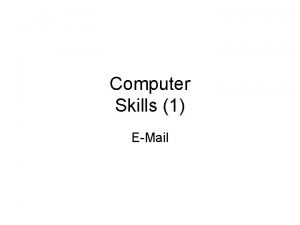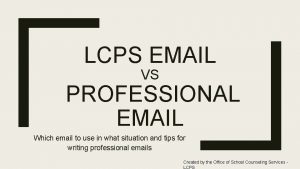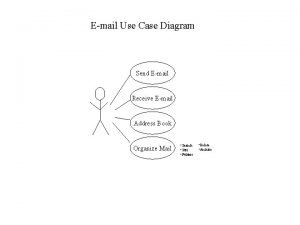Animal experimenter training courses lijie Tel 63600434 Email











































- Slides: 43

Animal experimenter training courses lijie Tel: 63600434 E-mail: lijie 8@ustc. edu. cn

The reasons of animal center expansion: 1. PI increase 2. Students increase 3. animals incease

region Ⅰ Feeding and experimental region Ⅱ Feeding and experimental Region Ⅲ species preservation

The course includes four parts 1. Procedures must be performed before the animal experiment 2. Standard operating procedures in the animal facility 3. Animal rights and welfare 4. Irregularities and penalties

1. Procedures must be performed before the animal experiment ① Submit your animal experimental programs to the Ethics Committee of laboratory animals and then wait to be approved. (Animal experiment programs must conform to the later mentioned “Three Rs”)

② Attend training courses and pass the exam The process is as follows: 1. Fill in the application form and submitted to room 1005. 2. Download the relevant information and preview it. 3. Attend training courses and subsequent exam. 4. If you pass the exam(required to achieve 90 points), then attend the scene simulation operation. If you do not pass the exam, please attend the next training (one month later) 5. Anyone who pass the exam and attend all training courses will gain entry qualification with “train number”. (Entry qualification will be directly reflected in the College Access Card and You can use access cards to touch sensing module, and then enter the animal facility. Train No. :× × ×

③ “Animal experiments cooperation agreement” must be submitted before animals purchased from outside entering the animal facility(At least 3 days in advance and need supervisor signature) 3 day in advance! Need to prepare disinfectant, cage, drinking water, bedding

④ The source of the animals a. Buy animals from large supply base, each group of animals must be accompanied by “laboratory animal quality certification”. Large supply bases are recommended as follows: These animals can enter the region Ⅰand Ⅱ in the basement, 10 floor and the 11 th floor animal facility. The name The place Shanghai slack laboratory animal co. , LTD Shanghai Nanjing model animal research institute nanjing Military academy of medical sciences laboratory animal center beijing weitonglihua experimental animal technical co. , LTD (it is best not to order from nude mice) Hunan slack scene of laboratory animal co. , LTD beijing changsha

b. Animals from famous laboratory animal organizations (such as Jackson laboratory), must be accompanied by the “animals animal health report “ These animals can enter the region Ⅰand Ⅱ in the basement animal facility.


2. Standard operating procedures in the animal facility (1). Procedure of personnel entering and leaving the basement animal facility Authorized Go out use access card at the entrance Take off shoe covers and put on your shoes at the exit Take off your shoes and put on shoe covers Undress in the buffer room Ⅲ but keep shoe covers on the feet Use access card at the door of different regions Into the Leaving channel Change clothes in the changing room Into breeding room or animal laboratory to do your experiment Into the clean channel

Undress but keep shoe covers on the feet use access card again Take off shoe covers use access card, put on shoe covers


a. Remove your shoes into the shoe cabinet and put on shoe covers. b. To fit the sterilized uniform , try to wear thin clothes Too small! Too few !

c. How to wear a sterilized uniform ? Please follow the steps : 1. Take out a plastic bag(a set of uniform inside) from the cabinet in roomⅠ. 2. Spray disinfectant on your hands. 3. Torn the plastic bag, wear a hat, wear masks and gloves in roomⅡ. 4. Take out the uniform from the plastic bag and do not let it touch the ground. 5. Put one foot into the uniform and crossed the red line. 6. Put the other one foot into the uniform and let your feet to enter the “clean area”. 6. Tied cuffs with a rubber band. Note: The facilities at 10 th and 11 th floor has not hands disinfection device and red line.

d. Go into breeding room or animal laboratory to do your experiment.

e. Undress in the buffer room Ⅲ but keep shoe covers on the feet

Note: 1. Don't keep two doors open at the same time in one room. 2. Masks, hats, uniforms, gloves, shoe covers should be neatly dressed and try not to expose your own clothes and skin. 3. Use the fixed telephone inside the room, do not use mobile phones.

(2). Procedure of animals entering and leaving in the basement animal facility Animal Large appliance access and spray disinfection Breeding rooms Clean bench cage Go out

Note: a. Animals entering into the basement animal facility must be SPF animal and must from large supply bases previously mentioned. Animals must be accompanied by quality certification. Animal strain, sex, age and other information shall be marked completely.

b. Animal transport boxes must be qualified. Ventilation windows of the boxes must be covered with high efficiency air filter membrane and the boxes should be sealed with tape. If the box or membrane damage occurred , will be banned from entering the animal facility.

Spray disinfection

The program of putting animals into IVC cages : a. Put Animal transport boxes into a pre- sterilized(uv lamp for 15 min)Clean Bench. b. Open the boxes in clean bench and remove animas with a disinfected large forcep or 75% alcohol sprayed over gloved hands into IVC cages. c. . Add feed and drinking water. Note that you must fill in the complete information on the card(as shown in the picture).

1 2 3 4 5 6 A B C D E F G H Each cage has its own coordinate. So the cage will not be put in the wrong place, you will find it more easily.

Once animals were exposed in the outside world, it can not be put back into the animal facility. But some cases are exceptions : ① Animal irradiation experiments at the 11 th floor: Beause animals are always in a sealed container , no contact with the outside world , so you can put the irradiated animals back into regionⅠand Ⅱ. ② Animal imaging experiments at 10 th fooor: Beause animals were exposed in the outside world, it can not be put back into the basement animal facility. However, it can be put into a dirty room of the animal facility at 10 th fooor.

Note: a. Once the transport box or membrane damage , they were absolutely forbidden into animal rooms. b. Ensure that transport boxes were disinfected.

3. Procedure of experimental apparatus entering and leaving the basement animal facility UV disinfection for 15 minutes Small apparatus Apparatus need autoclaved steriliz ation Instruments and equipment transmission windows UV disinfection Double-door autoclave breeding rooms or laboratory Large appliance access UV disinfection for 30 minutes Leaving channel Go out Leaving channel breeding rooms or laboratory Go out Leaving channel Go out

Ultraviolet disinfection

Note Do not take experimental apparatus into animal room with people !

• IVC(Individually Ventilated Cages) • Its features are as follows: 1. Good tightness. 2. HEPA- filtered air flow in the box 3. Suitable for the breeding of SPF animals, as well as immune deficient animals.

Operating procedures of IVC cages key points: All operation for animals must be carried out in a clean bench

Operating procedures: A. 75% alcohol spray the inner surface of clean bench and UV light for 15 min before putting a variety of sterilization material and experiment apparatus into the clean bench. B. The surface of IVC cages and gloved hands also need to spray 75% alcohol. Then, feeding, watering and experiment can be carried out in clean bench.

Note: After the cages back into the rack, check a red indicator on the right side of the cage. If the red indicator is gone, It means the cage in the correct position. If the red indicator remains on , reposition the cage, otherwise the animals would be suffocated. IVC cages cannot be taken out of the basement animal facility.

4. rooms for the animals to be sacrificed , dissected and sampled laboratory in animal facility or room 1004. Do not take animals to PI lab for dissecting and sampling! If exceptional circumstances , it needs to be approved by center staff !

Some devices can be Shared Carbon dioxide sacrificed device Refrigerated centrifuge Small animal anesthesia machine The refrigerator

Disposal of animal carcasses • Animal carcasses and cards should be packed in a plastic bag and plastic bags must be tied tightly. Then , put the carcasses in the morgue freezer.

Processing of discarded items • waste bedding and cages should be placed into left channel. • Syringes and other sharp objects should be put on the cap and then put into the trash. • No drainage system inside the room, liquid waste need to be transferred to the outside of animal facility. • Put empty animal transport box into the leaving channel • Masks, gloves, hat, shoe covers are disposable products, should be discarded after use. Work uniform can be put in the buffer room Ⅲ for reuse.

3. Animal rights and welfare • • The Three Rs: Replacement: Substitution of non-living material (i. e. tissue cultures) or methods (i. e. computer modeling) for animals, or substitution of a lower species, which might be less sensitive to pain and distress, for a higher species. For example – using brain tissue slices in culture for studying neuroepileptic agents. Reduction: Reductions in the numbers of animals used to obtain information as achieved by statistical analysis. Refinement: Decrease in the incidence or severity of pain and distress in those animals that are used. For example – using inhalant anesthesia instead of injectable so that animals recover consciousness more rapidly.


4. Common violations and penalties Common violations: 1. Directly put animals into the animal facility without approval. 2. Enter animal rooms without qualification or fraudulent using someone else's qualification. 3. Disqualified person using someone else's qualification to enter animal rooms. 4. Mice per cage over five(except for pups still suckling). 5. Not visit animals every 2 days(except for special cases that were approved) 6. The animals were returned to the animal room after exposure to the outside world(except for special cases that were approved)

7. Experimental apparatus without passing the transmission window and without UV disinfection were carried into animal rooms. 8. Enter the animal room without sterilized uniforms or gloves, mask, etc. 9. Take IVC cages out of basement animal facility. 10. Patients with infectious disease enter into animals rooms.

Penalties: 1. First violation: Cancel the qualification for 2 weeks and unpaid labor in animal facilities for 2 weeks. 2. Second violation: Cancel the qualification for 2 months and retraining and re-examination 3. Third violation: Cancel the qualification permanently.

15
 Lijie chen
Lijie chen Weka knowledge flow
Weka knowledge flow Experimenter expectancy effects
Experimenter expectancy effects Dmr training courses
Dmr training courses Genetec training
Genetec training Ddu-gky training courses list
Ddu-gky training courses list Obd training courses
Obd training courses Tl9000 training
Tl9000 training Agresso training courses
Agresso training courses Mra course
Mra course Genetec cctv training
Genetec cctv training Customer service and cashier training courses
Customer service and cashier training courses Tceq training
Tceq training Cmg training courses
Cmg training courses Email formal informal
Email formal informal Primaros
Primaros Clasificacion de rapin y allen
Clasificacion de rapin y allen Tel aviv university electrical engineering
Tel aviv university electrical engineering Tel mixto
Tel mixto Tel-tone stock 1929
Tel-tone stock 1929 Tel ve levha haline getirilebilen elementler
Tel ve levha haline getirilebilen elementler 123 12345678
123 12345678 János vitéz összefoglaló táblázat
János vitéz összefoglaló táblázat Tel 104
Tel 104 Picture tel
Picture tel Badeend radio
Badeend radio Laminar 37m
Laminar 37m Tel aviv university mechanical engineering
Tel aviv university mechanical engineering Tel aviv university electrical engineering
Tel aviv university electrical engineering Tel 971
Tel 971 Tel
Tel Tel 044
Tel 044 Tel
Tel Sharengen
Sharengen Tel / tokyo electron sccm te
Tel / tokyo electron sccm te Logo tel
Logo tel Baby tel
Baby tel Tel 972
Tel 972 Mammoth oil stock 1920
Mammoth oil stock 1920 Tel 31
Tel 31 Telin manyetik alan formülü
Telin manyetik alan formülü Tel krgi
Tel krgi 2 tel
2 tel Fmf tanı kriterleri
Fmf tanı kriterleri


